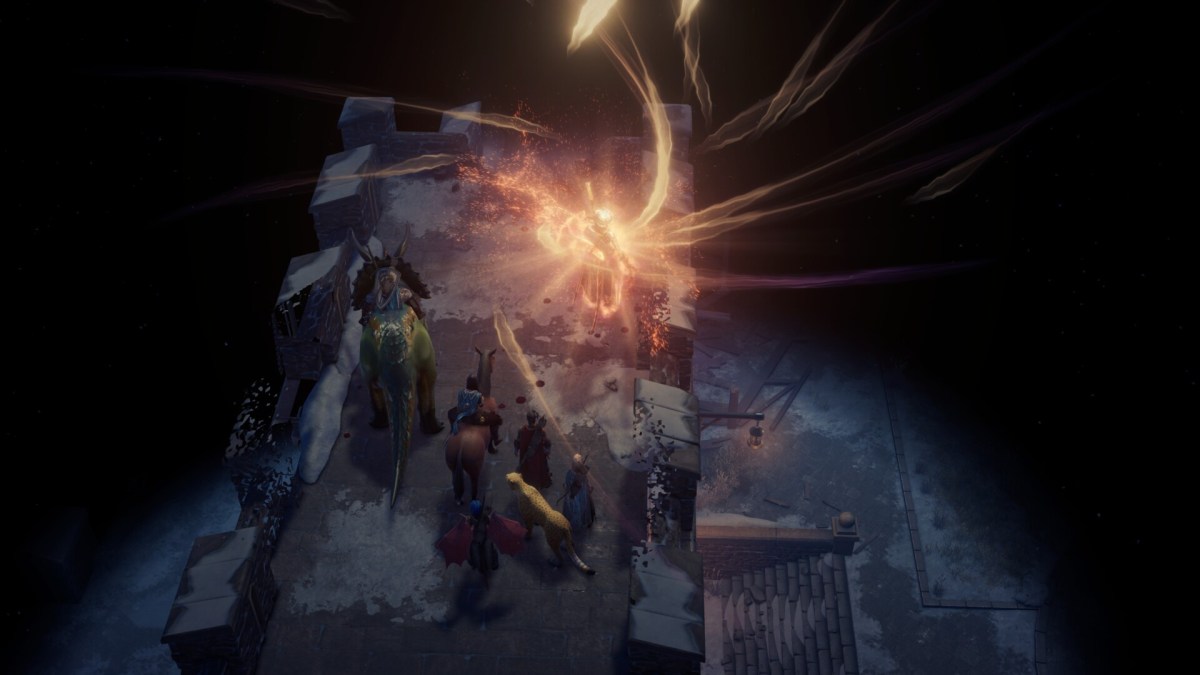The basics: Mythic Ranks, being a Mythic Hero, and Mythic Path dialogue options
Let’s start off with the basics. As mentioned earlier, the Mythic Paths system in Pathfinder: Wrath of the Righteous is separate from the regular leveling system.
There are a select few main quests that you need to finish, allowing you to increase your Mythic Rank. Here are some examples:
- Act I: The Burning City – You’ll receive your first Mythic Rank once you liberate the Gray Garrison. Touching the Wardstone here basically empowers your main character, turning you into a Mythic Hero.
- Act II: A Strike From The Sky – Defeat Nulkineth in the Lost Chapel. This grants you your second Mythic Hero rank.
- Act II: Banner Over the Citadel – Enter the Drezen citadel and solve the puzzle. This will allow you to obtain the Sword of Valor banner. This finally allows you to select a specific Mythic Path among those that you’ve unlocked.
To be clear, the first two levels will always make your character a Mythic Hero regardless of all the Mythic Paths you’ve unlocked and the dialogue choices you’ve made. The perks that you select here are just the foundations of what you’ll want to specialize in eventually. Then, toward the end of Act II (once you plant the Sword of Valor banner in Drezen), that’s when you’re offered more specific selections.
Note: Only the main character is able to follow a Mythic Path. Your companions, meanwhile, can obtain additional perks based on your main character’s Mythic Rank.
Can I switch Mythic Paths?
Yes. Here’s how the process usually goes:
- As mentioned, Mythic Hero is from Mythic Rank 1 to 2.
- Next, you’ll get to choose some of the mid-game options near the end of Act II (i.e., Angel, Demon, Aeon, Azata, Lich, or Trickster). You’ll follow this from Mythic Rank 3 onward.
- Finally, once you reach Mythic Rank 8 you’ve got these options:
- You can stick to the same mid-game Mythic Path so you can keep leveling it.
- Or you can switch to a late-game Mythic Path (i.e., Golden Dragon, Swarm-That-Walks, or Legend) provided that you meet the requirements.
- The Devil Mythic Path is the only one that’s different since it can only be selected at Mythic Rank 9, but there are some specific requirements, too.
Note: Mythic Rank 8 is also when some companions might leave you because you’ll undergo a full transformation. Examples include Seelah leaving after you became a Lich, Camellia leaving if you became the Aeon, and Arueshalae leaving if you followed the Demon.
Okay, what about my alignment?
It doesn’t matter if you’re only choosing/unlocking a Mythic Path. However, some later quests might require you to switch or be at a certain alignment first.
What about the decisions I’ve made during dialogues?
Again, this is fine as well (for the most part). For example, if you already unlocked the Angel Mythic Path and an option to reply with leanings towards the Demon pops up, selecting the latter won’t lock you out from the former. In the same vein, if you already have the Azata Mythic Path option and you keep selecting it as a response whenever it comes up, it’s not going to prevent you from picking, say, the Trickster Mythic Path at the end of Act II.
In a way, these dialogue options are just there to add more flavor or fluff, a means of role-playing. But, there are some key instances when you do need to choose a specific reply. I’ll mention these in the relevant sections.
All right, let’s go to the next part of our Pathfinder: Wrath of the Righteous guide so we can unlock the Angel, Demon, and Legend Mythic Paths.









Published: Sep 4, 2021 02:20 pm